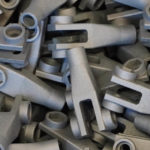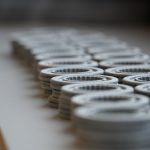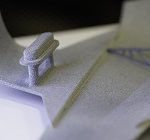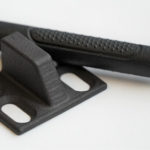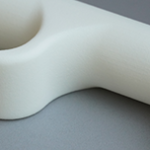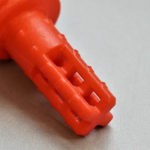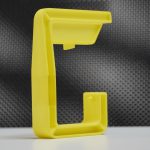Der Unterschied zwischen HP MJF und SLS
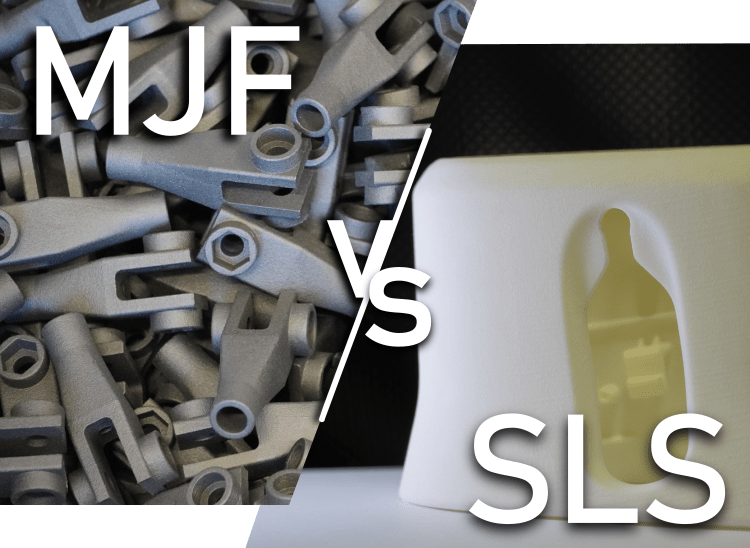
HP MJF vs. SLS
Lernen Sie die Unterschiede, Vor- und Nachteile der beiden pulverbettbasierten 3D Druck Verfahren kennen!
Sowohl das selektive Lasersintern als auch das HP Multi Jet Fusion gehören zu den pulverbettbasierten 3D Druck Technologien der Additiven Fertigung. Von den jeweiligen Anlagenhersteller werden dabei immer die eigenen Maschinen empfohlen. Wir sehen die Vor- und Nachteile der Technologien aus der direkten Anwendersicht und beurteilen die Nutzung einer Anlage rein technologisch. Beide Verfahren sind sehr fortschrittlich und produzieren hervorragende Resultate. Sie liefern sehr ähnliche Bauteile, die sich jedoch in manchen Facetten wesentlich unterscheiden. Beim Einsatz der Technologien sollten daher die Unterschiede genau bekannt sein. Im folgenden Artikel vergleichen wir beide Verfahren und geben Aufschluss darüber, bei welchem Einsatzzweck HP MJF oder SLS genutzt werden sollte.
Technologische Unterschiede HP MJF und SLS
Grundsätzlich können mit dem selektiven Lasersintern sowie mit dem HP Multi Jet Fusion Verfahren sehr ähnliche Bauteile aus dem gleichen Grundmaterial hergestellt werden. Es gibt jedoch wesentliche Verfahrensunterschiede. Das Grundmaterial – meist PA12 – liegt bei beiden Verfahren in Pulverform vor. Der Unterschied liegt darin, wie dieses feine Kunststoffpulver zu 3D gedruckten Bauteilen verschmolzen wird.
HP Multi Jet Fusion (HP MJF)
Selektives Lasersintern (SLS)
Das Verschmelzen (engl. Fusion) des Kunststoffpulvers geschieht beim HP Multi Jet Fusion vollkommen unterschiedlich zur SLS Technologie. Hierbei wird mit einem Druckkopf gearbeitet, der sich über die gesamte Breite des Bauraums erstreckt. Dieser Kopf druckt nun auf eine vorbereitete Pulverschicht schwarzen Fusing Agent und weißen Detailling Agent auf. Im Grunde ist es schwarze und weiße Tinte bzw. Bindemittel, die dazu verwendet wird, das Bauteil zum einen abzuzeichnen (schwarze Farbe) und zum anderen die Ränder scharf abzubilden (weiße Farbe). An dem beweglichen Druckkopf sind zusätzliche Infrarot-Wämequellen angebracht, die dann das Bauteil an den schwarzen Stellen verschmelzen lassen. Mehr zum HP MJF Verfahren...
Höhere Detailtreue
Durch die verwendeten Agents schafft es das MJF Verfahren gleichmäßigere Oberflächen mit einer höheren Detailtreue gegenüber dem SLS Verfahren herzustellen. Auch ist die Schichtstärke mit 80µm geringer als beim selektiven Lasersintern, welches i.d.R. mit 120µm arbeitet.
Stabilere Bauteile
Der HP Multi Jet Fusion Prozess erzeugt stabilere Bauteile als das selektive Lasersintern. Durch den verwendeten Agent werden die Bauteile gleichmäßiger verschmolzen und sind dadurch nahezu isotrop.
Das selektive Lasersintern nutzt für das Verbacken (Sintern) des Materials einen feinen Laserstrahl, der die einzelnen Druckschichten in rasender Geschwindigkeit abfährt. Dieser Vorgang lässt sich sehr gut im oberen Video verfolgen. Die entstehenden dunkleren Bereiche sind die bereits gesinterten Bereiche. Im Anschluss wird eine neue Pulverschicht aufgetragen und der Sinterprozess der nächsten Bauteilschicht startet. Im Gegensatz zum HP Multi Jet Fusion Verfahren ist hier kein Bindemittel notwendig. Aus diesem Grund sind gesinterte Bauteile meist weiß (abhängig von der Grundmaterialfarbe), da keine Agents oder Binder, wie beim HP Verfahren notwendig sind. Mehr zum selektiven Lasersintern...
Mehr Veredelungsmöglichkeiten
Aufgrund der weißen Grundfarbe eignen sich SLS Bauteile besonders gut für weitere Veredelungsschritte, wie bspw. das Einfärben in einer Wunschfarbe. Im Gegensatz dazu können HP MJF Bauteile, die in der Grundfarbe grau sind, bei uns nur schwarz eingefärbt werden.
Maßhaltiger bei größeren Bauteilen
Größere Bauteile sind wesentlich formstabiler und genauer mit dem SLS Verfahren herzustellen als mit dem HP MJF Verfahren. Das liegt an dem niedriegeren Energieeintrag beim Lasersintern.
Gegenüberstellung von HP MJF und SLS
Man kann nicht pauschal sagen, welches pulverbettbasierte Verfahren grundsätzlich besser ist. Es kommt immer auf den Anwendungsfall an. In der folgenden Gegenüberstellung listen wir die Vor- und Nachteile der beiden Verfahren auf und geben Empfehlungen für unterschiedliche Anwendungsfelder:
HP MJF
SLS
Vor- und Nachteile
Das noch wesentlich jüngere HP MJF Verfahren bietet nicht ganz so viele Freiheiten, dennoch sollte man es immer mit dem selektiven Lasersintern vergleichen. Die wesentlichen Vor- und Nachteile sind:
Vor- und Nachteile
Mit der Auswahl des etablierten und vielseitig einsetzbaren SLS Verfahren kann man meist nichts falsch machen. Die wesentlichen Vor- und Nachteile sind:
- Bessere Oberflächen
- Höhere Detailtreue
- Isotrope Materialeigenschaften
- Schnellerer Druckprozess
- Breiteres Anwendungsfeld
- Maßhaltigere Bauteile
- Höhere Temperaturbeständigkeit
- Dickere Wandstärken
- Materialien z.T. für den Lebensmittelkontakt (FDA)
- Nur in grau und schwarz möglich
- Teurer als das selektive Lasersintern
- Bei hohen Wandstärken (ca. >5mm) Qualitätseinbußen möglich
- Etwas "weicher" verglichen mit dem HP MJF
- Bei dünnen Wandstärken nicht möglich
Anwendungen
Das HP MJF ist klar auf die Serienfertigung von mittleren Losgrößen ausgelegt. Für Prototypen, bei denen es auf die Maßhaltigkeit ankommt, sollte man eher das SLS Verfahren verwenden. Typische Anwendungsfelder sind:
- Mittlere Serien (100-10.000 Stk.) kleinerer Bauteile
- Kleine Funktionsprototypen
- Detailreiche Bauteile
- Fertigungshilfen
Anwendungen
Das selektive Lasersintern bringt gegenüber dem HP Verfahren viele wichtige Vorteile für die Prototypenfertigung mit, kann aber ebenso für die Kleinserienfertigung verwendet werden. Typische Anwendungsfelder sind:
- Prototypen
- Maßhaltige Einbaumuster
- Farbige Bauteile
- Kleinserien für größere Bauteile

